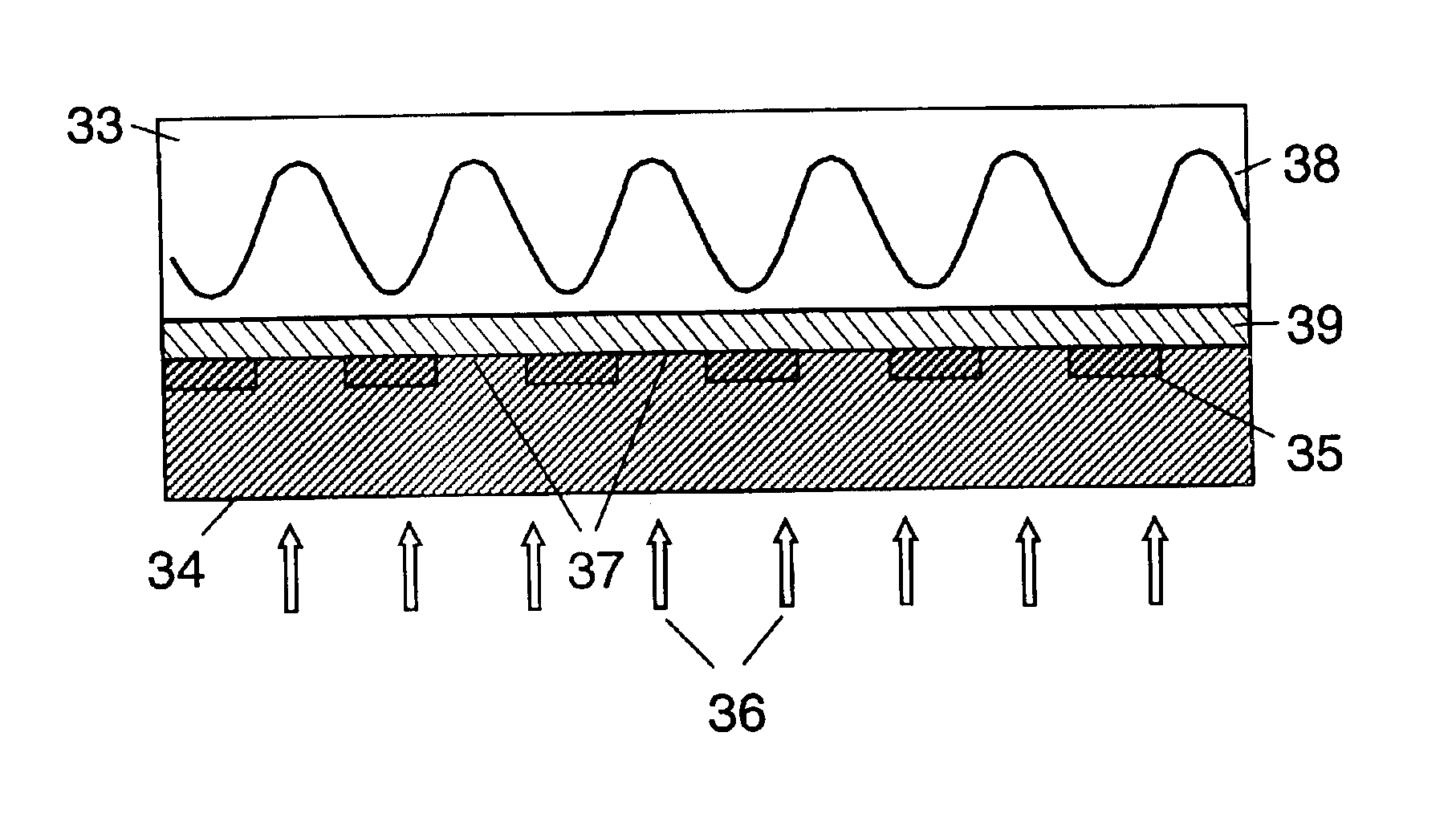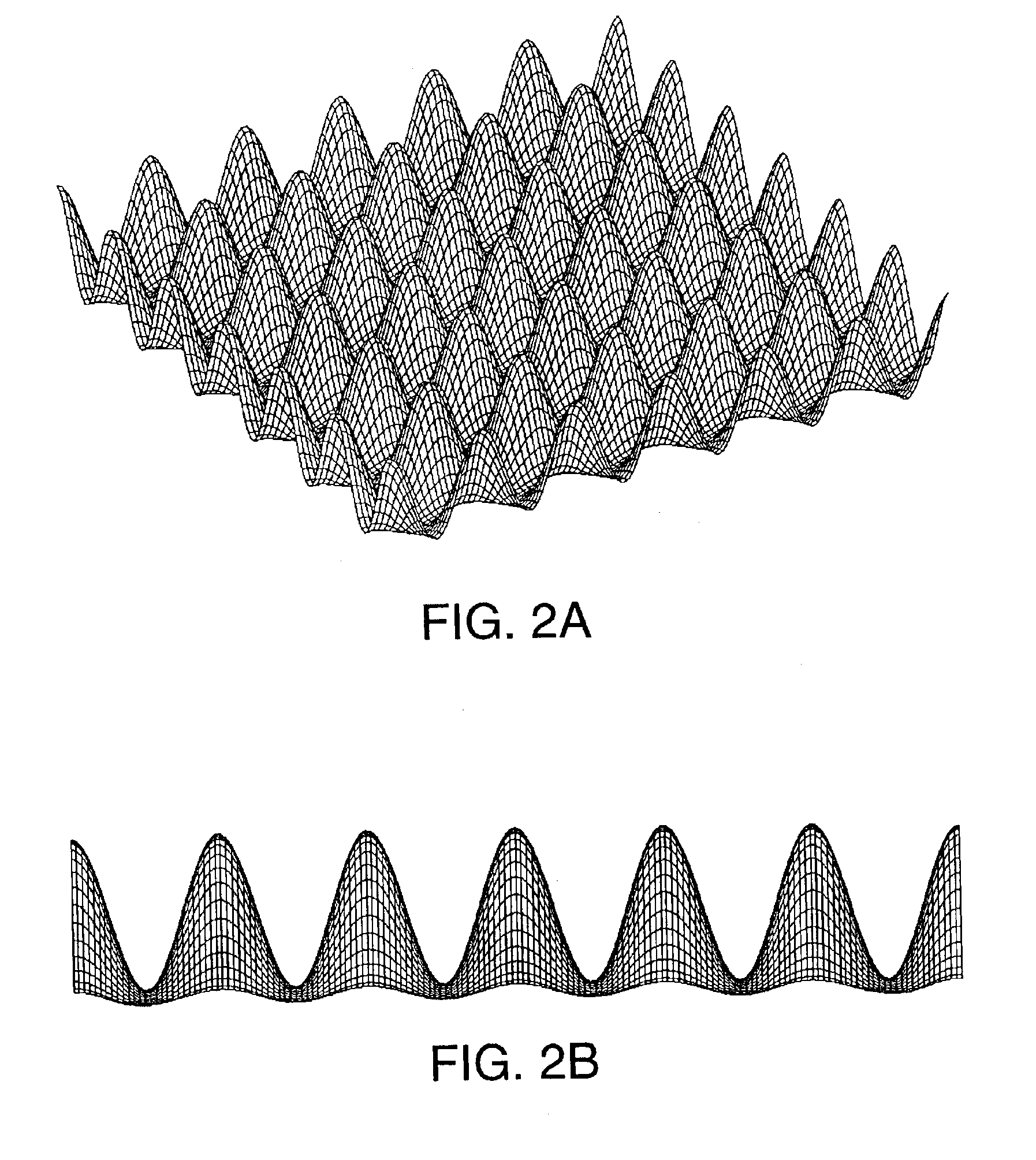Method for producing large area antireflective microtextured surfaces
a micro-textured surface and large-area technology, applied in the field of anti-reflective micro-textured surfaces, can solve the problems that the photomask has so far been overlooked, and achieve the effects of excellent anti-reflective properties, easy replication, and good control of the microscopic details of the surface profil
- Summary
- Abstract
- Description
- Claims
- Application Information
AI Technical Summary
Benefits of technology
Problems solved by technology
Method used
Image
Examples
example 1
[0045]A typical period of the periodic EAP structure for visible light is 250 nm. By visible light, we mean electromagnetic radiation with wavelength in vacuum in the range from 390 nm to 800 nm. An aligner with NA=0.65 and DUV source wavelength λ=248 nm will give in the image plane Δic=191 nm, fi / fic=0.76, and MTF=0.14. A similar aligner with NA=0.75 gives Δic=165 nm, fi / fic=0.66, and MTF=0.23.
[0046]Special contrast enhancement techniques like oblique off-axis illumination, single-sideband technique, and other aligner specific techniques can significantly increase the value of the modulation transfer function. A phase shift mask, or a binary mask combined with phase shift elements can be employed to increase the contrast of the image as well. Examples of phase shift masks are given below in the context of contact lithography.
[0047]Another way to increase the modulation transfer function is to reduce the exposure wavelength.
example 2
[0048]An aligner with NA=0.65 and DUV light source λ=193 nm gives a critical period in the image plane Δic=148 nm. Thus for the 250 nm period EAP structure, we have fi / fic=0.59, and MTF=0.3 or 30%. That is much better than 14% for the light source with Δ=248 nm (see Example 1).
[0049]Some of the contrast enhancing techniques mentioned above may be combined together to further increase the contrast enhancing effect.
[0050]The photoresist non-linearity, developer concentration and temperature, and developing time can be used to optimize the resulting profile.
Approach II. Contact Lithography
[0051]A subwavelength mask in contact mode can be used with DUV to get the intensity profile of the EAP with a nearest neighbor spacing less than 250 nm. Only light of the zero diffraction order passes through the sub-wavelength aperture. The light has maximum intensity at the center of the aperture provided that incident light is perpendicular to the aperture plane. The intensity of light drops towar...
PUM
| Property | Measurement | Unit |
|---|---|---|
| total height | aaaaa | aaaaa |
| total height | aaaaa | aaaaa |
| distance | aaaaa | aaaaa |
Abstract
Description
Claims
Application Information
 Login to View More
Login to View More - R&D
- Intellectual Property
- Life Sciences
- Materials
- Tech Scout
- Unparalleled Data Quality
- Higher Quality Content
- 60% Fewer Hallucinations
Browse by: Latest US Patents, China's latest patents, Technical Efficacy Thesaurus, Application Domain, Technology Topic, Popular Technical Reports.
© 2025 PatSnap. All rights reserved.Legal|Privacy policy|Modern Slavery Act Transparency Statement|Sitemap|About US| Contact US: help@patsnap.com



